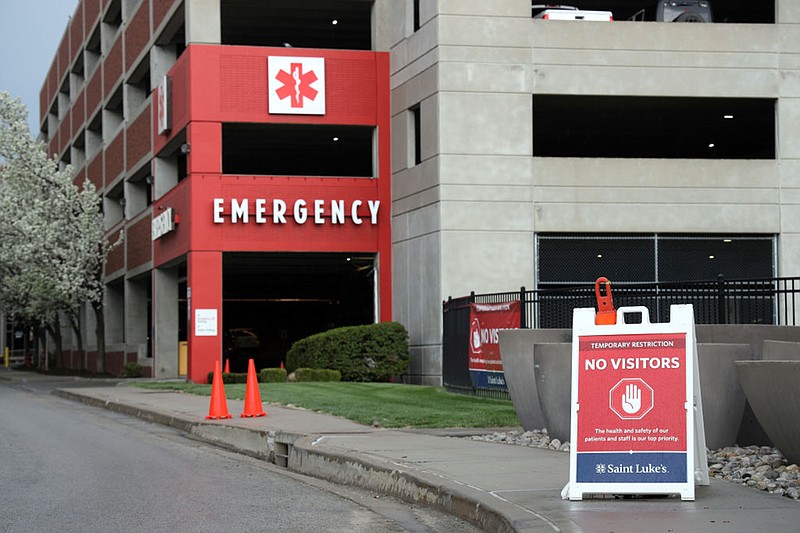Though fewer counties around the state were reported to be in the red zone, the White House Coronavirus Task Force warned Missourians this week to not let their guards down.
"There are still very high virus levels across the state; activities that were safe in the summer are not safe now. Increase mitigation efforts," according to the task force's latest reported, dated Dec. 6.
That report reflected COVID-19 case and death data through Dec. 4 and testing data through Dec. 2.
The News Tribune has also received through Gov. Mike Parson's office the task force's previous report - dated Nov. 29 - which reflects case and death data through Nov. 27 and testing data through Nov. 25.
Every county in the state had moderate or high levels of community transmission, with 91 percent having red zone high rates of new cases and positive test results, as of the Nov. 29 report.
As of the Dec. 6 report, 91 percent of all counties had moderate or high levels of community transmission, with 83 percent in the red zone.
Jefferson City, Columbia and every Mid-Missouri county was still in the red zone, with the exceptions of Osage County - in orange - and Gasconade County, in yellow.
Both reports continued to contrast the inadequacy of most states' mitigation efforts with success in many European countries where schools have also been kept open or success in other states.
The Nov. 29 report also cautioned Missourians older than 65 or who have significant underlying health conditions not to go into any indoor public spaces where anyone may not be wearing a mask and to have their groceries and medications delivered.
Missourians younger than 40 were advised to assume they became infected over Thanksgiving if they gathered with anyone beyond their immediate household and were also advised that, while they would most likely not have symptoms, they should stay away from anyone at increased risk for severe disease and get tested immediately.
Those older than 65 or who have other medical conditions and who gathered outside their household were advised to get tested immediately - to give themselves the best chance of therapies working, as most work best early in an infection.
The number of tests for COVID-19 performed in Missouri dropped by 30 percent over the previous two weeks, the White House task force reported Dec. 6.
Testing has been rebounding since the especially huge drop on Thanksgiving, with the daily average number of tests performed in the state between Nov. 30 and Dec. 6 more than 23 percent higher than the average Nov. 23-29, according to data from the state's online COVID-19 dashboard.
The increase in daily average testing in Cole County last week over the week before was similar, almost 22 percent more.
Despite the recent dips in testing and in the number of counties with red zone status, other indicators illustrate how the coronavirus is still widespread.
Between Nov. 21-27, an average of 304 patients confirmed to have COVID-19 and another 213 patients suspected to have the disease were admitted every day to Missouri's hospitals.
Those numbers were not really different in the Dec. 6 report, with an average of 302 patients confirmed to have COVID-19 and 230 more suspected to have the disease admitted to hospitals every day from Nov. 28 through Dec. 4.
The state's test positivity rate also remained stable at 18.6 percent - in the red zone, being at or above 10.1 percent - though the rate was ninth-highest in the country last week, compared to fifth-highest the week before.
What all this means for Missouri communities and policymakers had not changed, from the task force's perspective.
The nationwide fall-to-winter surge "is the most rapid increase in cases; the widest spread of intense transmission, with more than 2,000 counties in COVID red zones; and the longest duration of rapid increase, now entering its 8th week, that we have experienced."
This week's report added: "Mitigation efforts must increase, including the implementation of key state and local policies with an additional focus on uniform behavioral change including masking, physical distancing, hand hygiene, no indoor gatherings outside of immediate households, and aggressive testing to find the asymptomatic individuals responsible for the majority of infectious spread."
More specific recommendations remained the same as in recent weeks, particularly on limiting restaurants' indoor capacities, closing bars or limiting their hours, ensuring full flu immunization, requiring masks in schools, pausing extracurricular activities to prevent off-field or off-court transmission in surrounding activities, and encouraging universities to have testing plans.
Though Pfizer and BioNTech's COVID-19 vaccine may be approved in the U.S. as early as this week, "the current vaccine implementation will not substantially reduce viral spread, hospitalizations, or fatalities until the 100 million Americans with comorbidities can be fully immunized, which will take until the late spring. Behavioral change and aggressive mitigation policies are the only widespread prevention tools that we have to address this winter surge," the report states.



